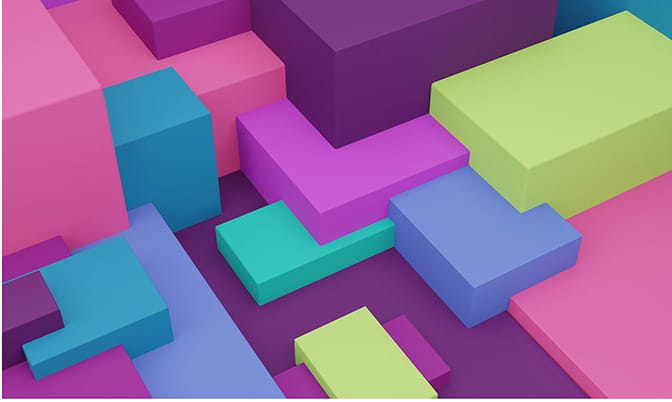Lakie Blech
Technology. Can’t live with it, can’t live without it.” Hashem gives us tools with the choice to use them to elevate society, or not use them and let the opportunity go unexplored. When students open their computer for a teacher’s lesson, they open a device to help them experience the material in new and exciting ways. “The World Wide Web was created to meet the demand for … information sharing between scientists in universities and institutes around the world.” This information sharing has proved to be an incredible asset, especially for our generation’s educators and students. The games, lessons, and content that are created and built by our teachers and others provide an extra dimension of learning in and out of the classroom. Using technology in this way allows for an unparalleled individualization of learning. The benefit of this is seen by anyone watching a student interact with the lesson. Technology allows for both student learning and teacher collaboration to enable more complex yet individualized lesson plans.
The problem we all face is what happens when there is too much information sharing. “The Children’s Internet Protection Act (CIPA) was enacted by Congress in 2000 to address concerns about children’s access to obscene or harmful content over the Internet.” This act is a baseline for content filtering at schools. However, in our specific educational communities of Jewish Orthodox education, our need for filtering may be stronger than what is federally mandated. Every school needs to identify its guidelines for “content” and then proceed in teaching its students in the best way that honors their educational goals. Some institutions may shy away from any content; however, I believe that with enough creative solutions, technological educational tools can be available to all.
Another question facing school leaders, especially in smaller schools or schools still in the process of adopting technology, relates to staffing. Who is in charge of the technology? Who should decide what technologies should be available – or even required – in the classroom? How does a school make the correct technology choices, especially in light of the content filtering challenge we mentioned?
There are many staff members with varying degrees of talent at each institution, and allowing their input on issues will help create avenues for growth and allow schools to fix issues “in-house”. My personal story shows just how much we can utilize our staff and help enhance our schools’ visions while creating additional opportunities for staff development and professional growth.
In 2020, I was working as a fourth-grade teacher. covid-19 hit and, like the rest of the educational world, our students needed devices to access educational content remotely. While our school purchased computers and filtering software, the devices and software were not compatible even though the companies we purchased them from assured us they would be. The school was advised to purchase Windows devices as they can last longer and have more capability, and we were told to use GoGuardian to be the “filter”. GoGuardian does work with a lot of Windows devices and servers, however our school had an Active Directory with Azure that was not completely supported by GoGuardian at the time. Finding devices during covid was a challenge so we needed a fix for our Windows computers, and fast.
As someone naturally intuitive with technology, growing up in a family of “techies,” I offered to help. I called around to every computer contact I had, the school had, and others I found on social media and help sites with the mission of how we “filter” these devices for our school’s needs. After many phone calls and emails, technology plans, and talks with multiple software companies, we found solutions that worked best for our institution. Interestingly, the solution we selected was from a Jewish person who commented on a tech post on a national non-Jewish question board. We ended up hiring the company he worked for to remotely help us install a new solution.
Years later we have morphed with the curve balls and we currently have many technologies running at the same time to achieve our current, ever-changing and expanding needs.
When creating comprehensive technological solutions for an institution, the first step is to make a roadmap of what the primary goals are. Then one can create a plan of software and hardware purchases and strategies that will allow the institution to reach its educational goals realistically and efficiently.
One of the first choices a school has to make is what hardware to purchase. Two cost-effective options are Chromebooks and Windows laptops. With Chromebooks, whitelist filtering can be done straight from the Google Admin Suite. Policies and levels of filtering can be set for each of the organizational units within the school, such as teachers, lower school students, and upper school students. Chromebooks can be inexpensive compared to other devices. A drawback of Chromebooks is that they only receive updates for a relatively short period of time, and the devices a school purchases may need to be replaced in just a few years. Additionally, Chromebooks work with the Google suite of software, such as Docs and Sheets, but not with Microsoft Word and Excel.
The next choice is utilizing Microsoft Endpoint to set specific policies specifically for Windows devices. This was the fix that was recommended for us at the time and it worked well. You can set policies to “lockdown” the devices and add a whitelist as well. Windows devices are thought to allow for more capability offline and don’t suffer from the end-of-life dates found with Chromebooks.
There are great companies that provide all-encompassing filtering solutions for a variety of devices, such as Techloq, Gentech, and Netspark. The benefits of each should be researched to ensure it will meet the needs of your institution. The biggest challenge of using these services is they tend to be more expensive.
With technology, we all have to be creative to make it work for us. It is also imperative to expect curveballs because often such technological initiatives may not perform as planned once launched, and being flexible with the roadmap is critical for its success. However, when we get things to work it is an amazing feeling to be an integral part of that success, in addition to the success of our greater goal – enhancing student learning.
After our school’s covid experience, I was hired as the Director of Innovation. In my current position I work on the greater innovative practices, specifically focusing on the marketing and technological capabilities of the school.
Some great examples of technology usage include:
- Teachers use Smart Boards during interactive lessons, such as students highlighting specific parts of pesukim and meforshim as they explain it on a deeper level.
- Students send in their thoughts on a virtual sticky note as the teacher is teaching and soliciting feedback simultaneously.
- Recording songs in music class while using computerized instruments and software.
- Research done on a variety of school subjects.
- Students accommodated using text-to-speech software to help with essay writing.
- Songs and videos are projected as a learning tool.
- Interactive games for content review.
I am amazed every day at just how much is added with the technological capabilities that we have today. It is up to us as administrators to make sure that we follow “lifnei iver lo setain michshol.” When we give technology to children we must have it filtered within the guidelines of respect toward our communities. At the same time, we also need to allow our students to utilize and learn with technological tools in the best way possible.
Supporting technology and software is an absolute pleasure of mine. It’s one thing to give over information via direct teaching (something I love to do as well); however, it is another thing entirely to guide those with the awareness and knowledge to access information appropriately and efficiently for themselves. The learners will be able to support their own learning – a skill they retain for life.
Lakie Blech, educator by day and fitness instructor by night, currently serves as Director of Innovation at the Phoenix Hebrew Academy. Lakie, an out-of-the-box thinker, focuses on the betterment of institutions. She is on track for her Master’s degree in Education and Innovation (Principalship) in May of 2023. Lakie can be reached at MorahLakie@gmail.com



